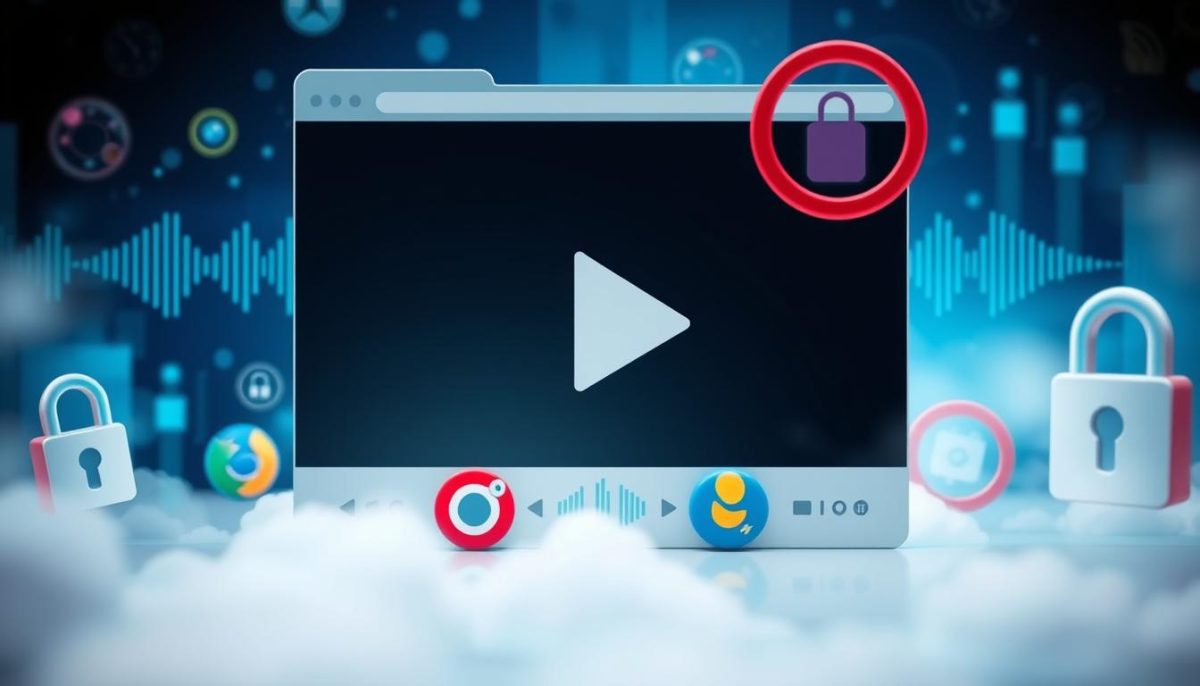As web developers and enthusiasts, we often encounter HTML audio autoplay issues that can disrupt user experience. Many of us implement audio elements to enhance our websites with background music or announcements, but browser updates frequently impose restrictions that affect autoplay functionality. In this section, we will explore the common challenges related to audio not playing automatically and dive into the reasons behind these restrictions. Understanding these web audio problems is crucial for effective audio autoplay troubleshooting in subsequent sections.
Understanding Autoplay Restrictions in Browsers
As we dive into the world of audio playback on the web, understanding autoplay restrictions in browsers is essential. Each browser has its own policies regarding how to handle audio autoplay. By recognizing these autoplay failure reasons, we can develop strategies to ensure a smoother experience for users.
Common Reasons for Autoplay to Fail
Audio autoplay restrictions can vary widely across different browsers. Common reasons for autoplay to fail include:
- The browser detects no prior user interaction, such as clicks or keystrokes.
- Audio is set to play without being muted, often leading to blocks by browser autoplay policies.
- The type of content being played may activate specific audio playback handling rules.
Understanding these factors can help us better anticipate issues related to audio playback in our projects.
How Browsers Handle Audio Autoplay
To effectively manage autoplay, we must pay attention to how browsers manage autoplay requests. Major browsers utilize specific algorithms to evaluate user engagement and preferences. Here is a brief comparison of how various browsers handle autoplay:
| Browser | Muted Autoplay Allowed | User Interaction Required |
|---|---|---|
| Chrome | Yes | No |
| Firefox | Yes | Yes for unmuted audio |
| Safari | No | Yes |
| Edge | Yes | No |
By being aware of these browser audio policies, we can adapt our audio integration techniques to better meet user expectations.

Troubleshooting HTML Audio Autoplay Not Working
When tackling issues related to HTML audio autoplay, our first step should always involve thorough HTML audio code troubleshooting. Identifying any coding errors can significantly impact the success of enabling audio play features. We must ensure the proper structure of our audio elements to minimize issues.
Check Your Audio Element Code
When fixing audio tags, we need to scrutinize our code for any mistakes. A well-formed audio element should have all necessary attributes in place, including the autoplay attribute. Common audio element coding errors can include:
- Missing or incorrect
<source>links - Improperly nested attributes or tags
- Failure to specify the type of audio file
Taking the time to review our HTML code can prevent these simple mistakes. Ensuring that our audio tags are correctly placed and formatted is crucial in resolving autoplay issues.
Ensure User Interaction is Included
Many browsers have strict policies regarding autoresume audio playback. They often require user interaction for autoplay, stating the need for an initial action—like clicking a button. Integrating this into our design not only aligns with browser policies but also enhances user experience.
To encourage user interaction, we can consider implementing the following best practices for audio autoplay:
- Add clear and inviting play buttons.
- Utilize engaging prompts to inform users about the audio playback.
- Design an interactive interface that encourages exploring audio content.

Implementing Workarounds for Autoplay Issues
When we encounter audio autoplay issues, it’s essential to consider various audio autoplay workarounds that can help us enhance the playback experience. While browsers implement strict limitations to improve user experience, employing alternative autoplay strategies can significantly alleviate these frustrations. One effective approach is to utilize JavaScript functions that prompt a user interaction, such as a click or tap, to initiate audio playback. This method ensures compliance with browser rules while allowing us to engage users more actively.
Additionally, integrating user-triggered events—such as a button that users can press to start audio—often provides a seamless solution for fixing autoplay problems. This interaction can lead to a stronger connection between our content and the audience, making it more likely for them to enjoy the audio we present. Moreover, considering fallback audio options ensures that if autoplay fails, we still capture the listener’s attention through other channels.
Incorporating these workarounds not only helps us tackle browser restrictions but also enhances the overall user experience with our audio content. By balancing user engagement with technical requirements, we can create a more inviting environment for our listeners. As we navigate these challenges, let’s keep exploring innovative ways to deliver immersive audio experiences effectively and reliably.

